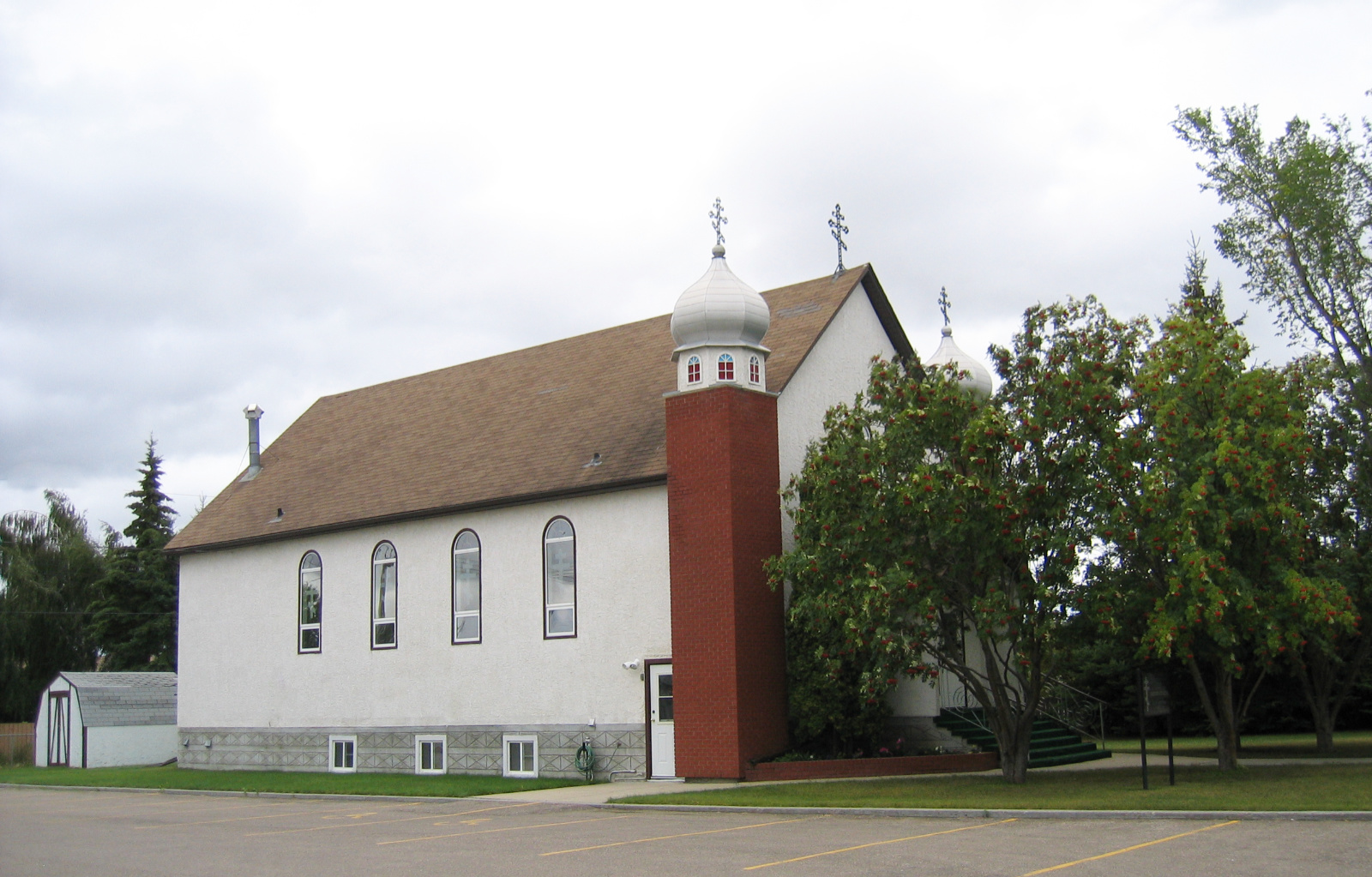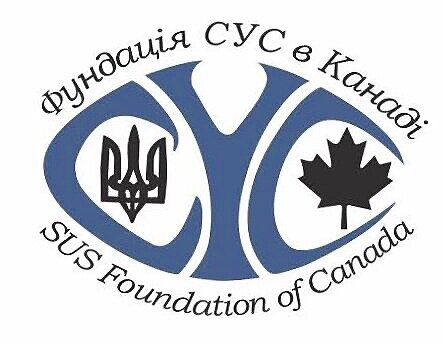In1959 some members of St. John the Baptist Church in Big Meadow, along with other members who were living in Bonnyville and neighbouring communities, began thinking about establishing a new Ukrainian Orthodox congregation in the town of Bonnyville, that had emerged as a leading regional centre. As was happening in most rural areas across Canada, the farming population was rapidly shrinking while advantageously situated towns and villages were simultaneously enjoying periods of growth due to the profound changes affecting the agricultural economy. With the increasing urbanization of rural settlements, and the greater mobility afforded by improved roads, town life grew in importance. Many districts in the countryside lost the schools, post offices and businesses that for decades had provided them with a local identity and name. Thus, the decision to found a congregation in Bonnyville was in many ways simply a reflection of the transformation that was taking place throughout much of rural Alberta.
Informal discussions in 1959 led to a founding meeting being held at the Huren family home in Bonnyville with the participation of Fr. P. Dorosh-Zmiyiwsky and some key members of the Big Meadow congregation. An executive committee was formed at this gathering, along with a building committee, and plans were made as to how to best proceed with the establishment of a Bonnyville church.
Around the same time, at an annual meeting held at Big Meadow on 4 December 1959, an executive was elected for St. John’s church that also supported the idea of starting a Bonnyville congregation. They agreed that all of the money raised from Christmas carolling that year would be dedicated toward facilitating the establishment of a new church in Bonnyville. There was a general feeling that the Big Meadow church was old and small, with no real potential for future growth.
This decision subsequently proved to be highly controversial with some of the long-time members of St. John’s parish, who responded by calling an extraordinary meeting on 17 January 1960 that elected a new executive, comprised almost entirely of different people. In replacing the leadership that had been chosen just 6 weeks earlier, the new executive accused their predecessors of neglecting their duties to the church (because it was impossible for one executive to serve two parishes) and demanded that all of the keys and records be turned over to them. Subsequently, further allegations were made that in addition to the carolling money, income earned from the Big Meadow hall had also been taken by the ousted executive without proper approval and utilized for the purposes of starting the new congregation. Not only were emotions running high because of these developments, but the threat of legal action meant that the escalating dispute could potentially prove to be costly as well as detrimental to the survival of both Ukrainian Orthodox factions in the nearby communities.
For their part, those behind the Bonnyville initiative argued that they were still members of St. John’s church and that the executive chosen in December had been fully within its rights to help start a town-based congregation. Pointing out that there had been problems in the parish for a number years (which they largely attributed to a difficult individual). They suggested that the majority of Big Meadow members were in favour of the decision to establish a church in Bonnyville. The ousted directors considered settling the issue in court, as they felt their honour had been impugned by the accusations of financial improprieties. Nonetheless, it was eventually decided to hand over the documents and keys to the new St. John’s executive so as to avoid legal complications and hopefully put an end to the unfortunate wrangling. Henceforth the two groups became separate organizational entities, the Bonnyville supporters having decided by February 1960 to adopt St. Elias as the patron of their new congregation.
Moving quickly to realize their goals, at a meeting held on 7 February 1960 the fledgling Bonnyville parish voted to purchase a two-acre parcel of land for their church, and later that year they celebrated their first feast day service on this site. At this time, the St. Elias faithful counted 14 members, virtually all whom still belonged to St. John’s church having only recently paid their annual dues. So as to facilitate the registration of their land with provincial authorities, on 5 August 1961 the congregation resolved to become incorporated under the charter of the Ukrainian Greek Orthodox Church of Canada. They were officially admitted in November of the same year.
Meanwhile, construction of a functional and spacious two-domed sanctuary began in the spring of 1961. By 30 April 1962 the structure was ready to be blessed and put to regular use as a place of worship. Although tensions continued to linger for several years between the Bonnyville faithful and those who had remained committed to Big Meadow. However, since the two congregations were part of the same district and shared the same clergy they continued to interact and periodically cooperate. Of course, with the passing of time, circumstances inevitably changed in both the Big Meadow and Bonnyville communities. Hurt feelings slowly healed and receded into memory. Indeed, despite these controversial and painful beginnings, St. Elias church quickly gained momentum and soon assumed a leading role within the Glendon parish district.
Thus, by 1964 Bonnyville had replaced Glendon as the preferred base for clergy who were assigned to serve the congregations in the northeast corner of the province. Although there was talk about moving the existing residence from Glendon to Bonnyville, and Elk Point and St. Paul expressed a desire to become the seat of the parish district, it was eventually agreed that a brand new manse would be built in the town of Bonnyville with funds raised in all of the congregations. In 1965 the Bonnyville parish district also obtained a ten-year lease for a church camp property on nearby Moose Lake, indicating that Ukrainian Orthodox adherents throughout the lake country of the northeast were looking optimistically toward the future.
In the second half of the 1960s St. Elias enjoyed a period of relative stability. But unfortunately this came to an end in 1970 because of some problems affecting their pastoral leadership. The unsettled situation was to last for two years, during which time the Bonnyville district was served out of Smoky Lake by Fr. Kubin while the manse was rented out to a teacher. While the subsequent posting of Fr. Semotiuk to the district improved matters for a time, by 1973 circumstances compelled the Western Diocese to attempt a reorganization of parish districts that briefly saw Myrnam, South Slawa, Morecambe, and even Wandering River, being added to the communities being served from Bonnyville. As had previously been the case when the seat of the northeast district was Glendon, it continued to be a challenge to generate enough funds to sustain a resident cleric. Given that at the end of 1973, the combined membership of all the churches in the district amounted to approximately sixty, it is not surprising that clergy were finding it extremely difficult to support their families while tending to the needs of their small and scattered congregations.
Eventually, some of these problems worked themselves out through the combined efforts of the clergy and the faithful. By 1978 St. Elias church in Bonnyville, along with its sister congregations at Big Meadow, Gifford, Glendon, Sandy Rapids and St. Paul, were once again functioning as a viable district. Although in the early 1980s Bonnyville reported having 12 members, and this figure grew to sixteen in 1984. The congregation nevertheless had trouble meeting its financial obligations to the Consistory because many of its parishioners were pensioners on a fixed income. In 1988 the Bonnyville and District Council sold the parish manse for the sum of $69,000. The proceeds were earmarked for a house to be built in St. Paul as a residence for Fr. Hohol. In this way, Bonnyville lost its position as the seat of the parish district for northeastern Alberta in much the same way that it had displaced the village of Glendon more than two decades earlier. Since St. Elias reported a membership of 40 individuals (15 families, and 10 singles) for 1994, the congregation does not seem to have suffered any lasting negative effects from the relocation and re-designation of the parish centre.
Visit this Cemetery
GPS Co-ordinates: 54.266138, -110.729885
Cemetery GPS: 54.32647, -110.48105
Affiliation: Ukrainian Orthodox Church of Canada





 Financial support generously provided by:
Financial support generously provided by: 